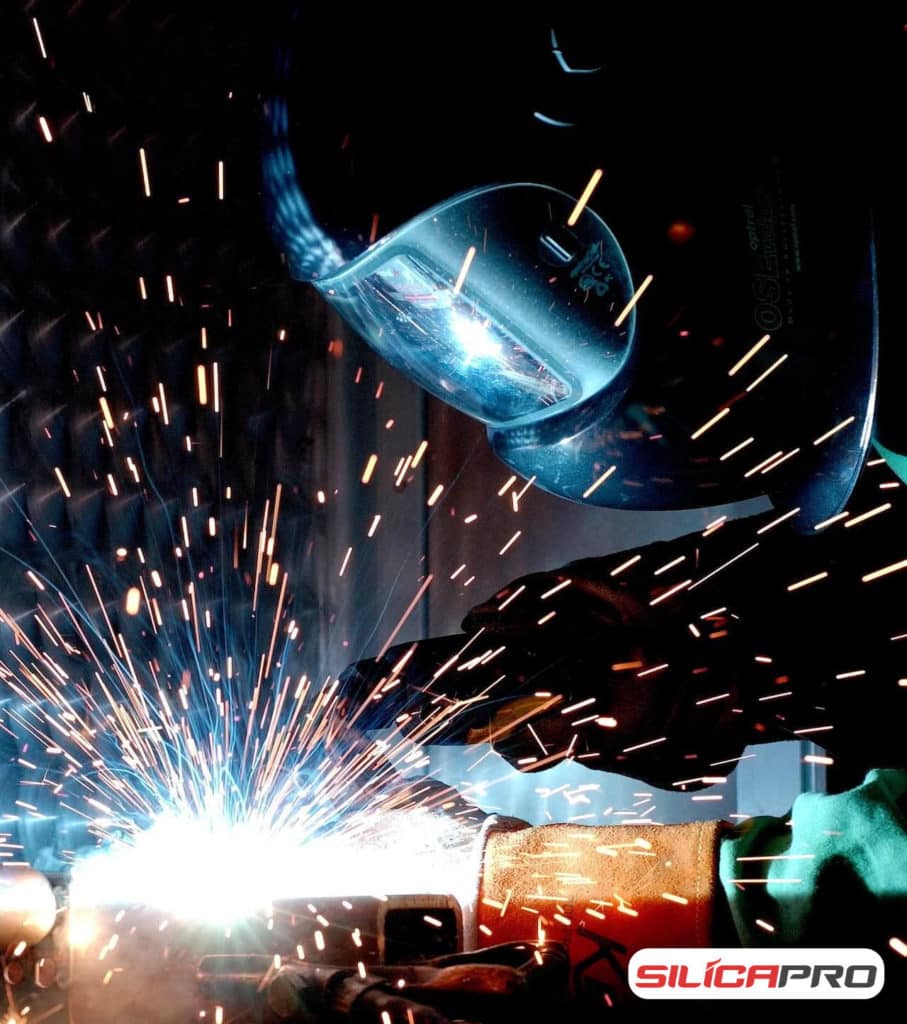
Working in fields that involve heat, electricity, or pressure requires a dedicated, safe area to ensure tasks are completed securely and effectively. A welding garage provides a controlled space that minimizes fire hazards and protects workers during welding operations. But what exactly is a welding garage, and how should it be set up?
Contents
Welding Garage for Safe Hot Working
A welding garage is a specialized area designed to handle hot work, such as tasks involving fire, heat, pressure, or electricity. These spaces often feature walls or curtains made from heat-resistant materials, particularly knitted fiberglass fabric, which provides effective insulation against heat and sparks.
Not all fiberglass cloth is suitable for welding garages; the material must have specific properties, including high heat resistance, thickness, and densely woven fibers. A welding garage can be customized for personal projects or scaled up for industrial purposes.
The welding garage setup typically includes hanging curtains or flexible fiberglass blankets that can be arranged to suit the workspace requirements. This setup prevents high-temperature sparks and splashes from reaching surrounding areas, which could cause injury or ignite nearby objects. Installing such barriers is a proven method for improving safety in welding environments.
Key Principles for Working in a Welding Garage
If you’re building a dedicated welding garage or working in a workshop with hot work, safety must be the top priority. Welding in small, enclosed spaces poses added risks, as accidents and fires can occur unexpectedly. It’s essential to follow specific safety protocols when working in such areas. Here are critical aspects to consider:
1. Heat Resistance of the Welding Garage
Fiberglass insulation in welding garages can typically withstand temperatures up to 1,000°F or higher, depending on the model. Fiberglass materials designed for welding applications are fire, spark, and slag-resistant, providing reliable protection in high-heat environments. Before beginning work, ensure that the fiberglass insulation and other materials in the welding garage can handle the required heat levels.
2. Fire Prevention Measures
Welding operations can easily lead to fires due to flammable materials like oil or gasoline. To reduce fire risks, consider placing a fiberglass blanket on the garage floor. This setup provides an additional layer of fire resistance, reducing the chance of fire hazards while allowing you to work more comfortably.
3. Personal Safety Equipment
Proper safety attire is crucial in welding work. This includes long-sleeved shirts made from thick, durable materials like denim or leather, eye protection, ear protection, and leather gloves. Wearing long trousers and closed-toe shoes will further protect you from sparks and splashes, ensuring safer operation.
Steps to Set Up a Welding Garage with Fiberglass
Define the Garage Area
Start by selecting an area that will function as your welding garage. Ideally, choose a space about the size of a two-car parking lot to provide sufficient room for welding activities and tool storage.
Choose Insulation Material
Fiberglass is the most commonly used material for hot work garages due to its heat resistance and durability. Look for fiberglass insulation that meets safety standards for welding applications, providing the necessary protection from sparks and high temperatures.
Separate the Workspace
For greater efficiency and cleanliness, divide the garage into two distinct areas. One area should serve as the primary welding zone, while the other can be designated for cutting or grinding. This setup keeps the welding area cleaner and allows you to keep stored materials organized. Since cutting and grinding generate more debris than welding, separating these activities helps maintain a safer and tidier workspace.
Install Ventilation and Smoke Extraction
Welding can produce hazardous fumes that may pose health risks. Proper ventilation is essential to prevent workers from inhaling toxic fumes. Consider installing a smoke extraction system to remove harmful gases effectively. An air conditioner can also be beneficial for summer work, helping maintain a comfortable temperature in the workspace.
Organize Work Tables and Tools
Arrange work tables and welding tools strategically to ensure easy access and a clear workspace. Storing tools on a flexible cart allows for efficient organization and safe cleaning, while a sturdy metal workbench provides a reliable surface for welding tasks.
Set Up Electrical Power
Ensure the welding station has an adequate power supply for the welding equipment. The welding machine’s size and specifications will determine the power requirements. Make sure the setup adheres to electrical safety standards to prevent power overloads.
Use Fiberglass for Fire Prevention
Fiberglass blankets, curtains, or wall panels offer essential fire prevention in a welding garage. These materials are specifically designed to withstand sparks and high temperatures, minimizing the risk of accidental fires.
Equipping Your Welding Garage for Safety
Equipping your welding garage with the right safety tools and materials is essential to create a secure workspace. Additional items, such as fire extinguishers, first-aid kits, and emergency exits, further enhance safety in case of accidents. A well-organized, properly ventilated, and insulated welding garage not only ensures worker protection but also allows for efficient, uninterrupted work.
In principle, safety should always be the primary concern when setting up and using a welding garage. Following these guidelines will help create a functional, hazard-free workspace tailored to welding and other hot work needs.
